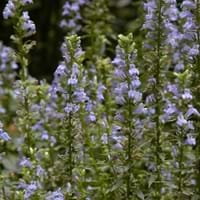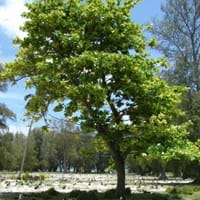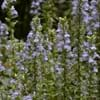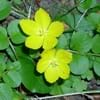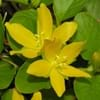Life Span
Perennial
Perennial
Type
Perennial
Fruit, Perennial, Tree
Origin
Northeastern United States, Mid-Atlantic United States, Southeastern United States, Central United States, Texas, Canada
Africa, Asia, Australia
Types
Not available
Not Available
Habitat
Open areas, stream banks, Wet Woods
Subtropical climates, Tropical areas
USDA Hardiness Zone
4-8
Not Available
AHS Heat Zone
8-1
Not Available
Sunset Zone
1a, 1b, 2a, 2b, 3a, 3b, 4, 5, 6, 7, 8, 9, 14, 15, 16, 17
Not Available
Habit
Clump-Forming
Spreading
Flower Color
Blue, Lavender, Blue Violet
Non Flowering Plant
Flower Color Modifier
Bicolor
Not Available
Fruit Color
Not Available
Dark Brown, Green
Leaf Color in Spring
Green, Dark Green
Dark Green
Leaf Color in Summer
Green, Dark Green
Green
Leaf Color in Fall
Green, Dark Green
Red
Leaf Color in Winter
Light Green
Red
Leaf Shape
Lanceolate
Broadly Ovate
Plant Season
Summer, Fall
Summer
Sunlight
Full Sun, Partial Sun, Partial shade
Full Sun, Partial Sun
Type of Soil
Clay, Loam
Loam
The pH of Soil
Acidic, Neutral, Alkaline
Acidic, Neutral
Soil Drainage
Average
Well drained
Bloom Time
Summer, Late Summer, Early Fall
Summer
Tolerances
Deer resistant, Shade areas, Wet Site
Dry soil
Where to Plant?
Ground
Container, Ground
How to Plant?
Divison, Seedlings
Seedlings, Stem Planting
Plant Maintenance
Low
Low
Watering Requirements
Do not let dry out between waterings, Needs Very high moisture, Requires consistently moist soil
Needs less watering
In Summer
Lots of watering
Ample Water
In Spring
Moderate
Moderate
In Winter
Average Water
Average Water
Soil pH
Acidic, Neutral, Alkaline
Acidic, Neutral
Soil Type
Clay, Loam
Loam
Soil Drainage Capacity
Average
Well drained
Sun Exposure
Full Sun, Partial Sun, Partial shade
Full Sun, Partial Sun
Pruning
Remove damaged leaves, Remove dead branches, Remove dead flowers, Remove dead leaves, Remove deadheads
Remove dead branches, Remove dead leaves
Fertilizers
10-10-10, Balanced liquid fertilizer
All-Purpose Liquid Fertilizer
Pests and Diseases
Head smut, Rust, Slugs, Snails
Not Available
Plant Tolerance
Deer resistant, Shade areas, Wet Site
Dry soil
Flower Petal Number
Single
Not Available
Foliage Texture
Medium
Fine
Foliage Sheen
Matte
Glossy
Attracts
Bees, Birds, Butterflies, Hummingbirds
Birds
Allergy
Skin irritation, Skin rash, Toxic if not prepared properly
Asthma
Aesthetic Uses
Beautification, Cottage Garden, Showy Purposes
Showy Purposes
Beauty Benefits
Skin Problems
Making cosmetics
Environmental Uses
Air purification
Air purification, Food for birds
Medicinal Uses
Diarrhea, Dysentry, Healing, Stomach pain, Syphilis
Energy, Minerals, ß-carotene, Vitamin A, Vitamin C, Vitamin E
Part of Plant Used
Bark, Flowers, Leaves, Root
Fruits
Other Uses
Used as Ornamental plant, Used for its medicinal properties
Grown for shade, Used As Food
Used As Indoor Plant
No
No
Used As Outdoor Plant
Yes
Yes
Garden Design
Mixed Border, Wildflower
Edible, Fruit Tree
Botanical Name
LOBELIA siphilitica
Terminalia catappa
Common Name
Great blue lobelia, great lobelia
Bengal almond, country almond, false kamani, Indian almond, Malabar almond, sea almond, tropical almond
In Hindi
महान ब्लू लोबेलिआ
जंगली बादाम
In German
Great Blue Lobelia
Katappenbaum, Seemandelbaum, Indische Mandel
In French
Great Lobelia bleu
Badamier
In Spanish
Gran Lobelia azul
almendro malabar, almendro de los trópicos, almendrón, falso kamani, Egombegombe
In Greek
Μεγάλη Μπλε Lobelia
Ινδικό αμύγδαλο
In Portuguese
Grande Lobelia azul
amêndoa, amendoeira, castanheira, anoz, árvore-de-anoz, castanholeira, coração-de-nego, castanhola, sete-copas, chapéu-de-sol, guarda-sol, terminália, figueira-da-índia
In Polish
Great Blue Lobelia
Migdałecznik właściwy
In Latin
Blue Lobelia
inti almont
Phylum
Magnoliophyta
Magnoliophyta
Class
Magnoliopsida
Magnoliopsida
Order
Campanulales
Myrtales
Family
Lobeliaceae
Combretaceae
Clade
Angiosperms, Asterids, Eudicots
Angiosperms, Eudicots, Rosids
Tribe
Not Available
Not Available
Subfamily
Lobelioideae
Not Available
Season and Care of Great Blue Lobelia and Indian Almond
Season and care of Great Blue Lobelia and Indian Almond is important to know. While considering everything about Great Blue Lobelia and Indian Almond Care, growing season is an essential factor. Great Blue Lobelia season is Summer and Fall and Indian Almond season is Summer and Fall. The type of soil for Great Blue Lobelia is Clay, Loam and for Indian Almond is Loam while the PH of soil for Great Blue Lobelia is Acidic, Neutral, Alkaline and for Indian Almond is Acidic, Neutral.
Great Blue Lobelia and Indian Almond Physical Information
Great Blue Lobelia and Indian Almond physical information is very important for comparison. Great Blue Lobelia height is 60.00 cm and width 30.50 cm whereas Indian Almond height is 500.00 cm and width 600.00 cm. The color specification of Great Blue Lobelia and Indian Almond are as follows:
Great Blue Lobelia flower color: Blue, Lavender and Blue Violet
Great Blue Lobelia leaf color: Green and Dark Green
Indian Almond flower color: Non Flowering Plant
- Indian Almond leaf color: Dark Green
Care of Great Blue Lobelia and Indian Almond
Care of Great Blue Lobelia and Indian Almond include pruning, fertilizers, watering etc. Great Blue Lobelia pruning is done Remove damaged leaves, Remove dead branches, Remove dead flowers, Remove dead leaves and Remove deadheads and Indian Almond pruning is done Remove dead branches and Remove dead leaves. In summer Great Blue Lobelia needs Lots of watering and in winter, it needs Average Water. Whereas, in summer Indian Almond needs Ample Water and in winter, it needs Average Water.
